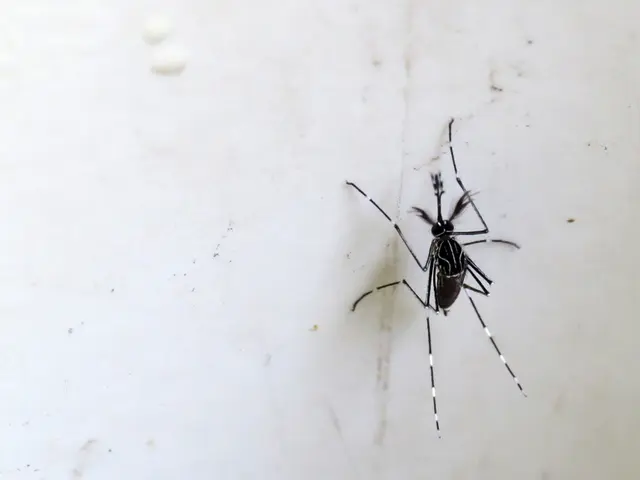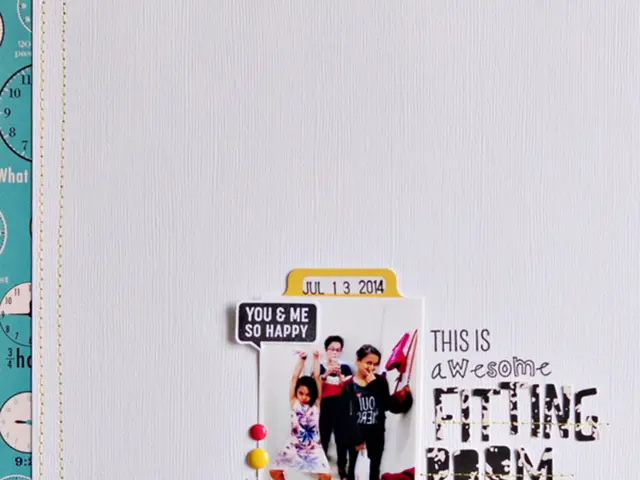Kickin' the Funk to the Curb: The Ultimate Guide to Slaying Sweat Stains
Solutions for Eliminating Underarm Perspiration Stains
No need to sweat (literally) about those pesky sweat stains ruining your fave outfits. Here's the lowdown on hacks and DIY remedies for sayonara-ing those stanky pit marks once and for all.
Sweat, in its purest form, is inherently odorless. It's those pesky bacteria on our skin, deodorant residues, and fabric fibers that give sweat stains their unsightly hues, primarily yellow or gray. These bad boys are especially noticeable on light clothing, and they can be a real pain to eliminate.
Game-Changing Prevention Strategies
The right deodorant is the MVP! Many stains result from the aluminum compounds in antiperspirants. For those prone to stains, give aluminum-free deodorants a shot, or opt for those that promise no residue.
Pro Tip: Give your deodorant ample drying time before putting on your clothes, helping cut down on those lingering residues and stains. Also, consider slipping on undershirts or sweat pads to protect sensitive tops from sweaty seepage. Opt for breathable materials, like linen or cotton, to stay cool and comfy during sweaty seasons.
Expert Tip: Wash sweaty garments right away, instead of letting them languish in the laundry bin. The longer the sweat and deodorant residues stay in the clothing, the more likely the fabric is to become stained.
Battling Sweat Stains: Home Remedies on Deck!
If you've already got sweat stains on your clothes—whether yellow discolorations on white tees or dingy edges on vibrant garb—it's time to take action! The fresher the stain, the easier it is to tackle. These tested home remedies can work wonders:
- Vinegar Voodoo: Mix equal parts distilled white vinegar and water, and soak the stained area in the solution for 30 minutes. Rinse with cold water, and wash with a mild detergent.
- Baking Soda Bullseye: Create a paste from baking soda and a bit of water, and apply it to the stain. Let it sit for 20-30 minutes, then rinse with cold water and wash the item as usual.
- Hydrogen Peroxide for Yellow Stains: Treat yellowish sweat stains with hydrogen peroxide, especially on white garments. Apply it to the stain, let it sit, and rinse with cold water. Always test a small, inconspicuous area first to ensure no color change or damage occurs.
- Lemon Juice for Yellow Stains: For colored fabrics, use a touch of lemon juice cautiously to lighten yellow stains. Apply to the stain and expose it to sunlight for a brief period.
For particularly stubborn or age-old stains, specialty stain removers from the drugstore can be mighty helpful as they penetrate deeply into fabric fibers and dissolve even dried residues. Just make sure to check the care instructions on the label to avoid damaging delicate materials.
Important note: Hot water is a no-go when attacking stains. While it might seem intuitive, soaking heavily soiled items in hot water can actually cook the stains into the fabric. Instead, start by treating the clothing with cold or warm water and wash after pretreatment.
Game on, sweat stains!
Community policy should include guidelines for workplace-wellness, promoting health-and-wellness initiatives such as fitness-and-exercise programs, skin-care seminars, and nutritional workshops to improve employee health and overall well-being.
Vocational training centers can benefit from incorporating sessions on proper personal hygiene, including sweat management and stain removal techniques, into their curriculum to prepare students for professional environments.
Science plays a vital role in understanding the causes of sweat-related problems, and further research in the field may lead to advancements in antiperspirant technology, providing more efficient and eco-friendly solutions for workplace-wellness and personal hygiene.








